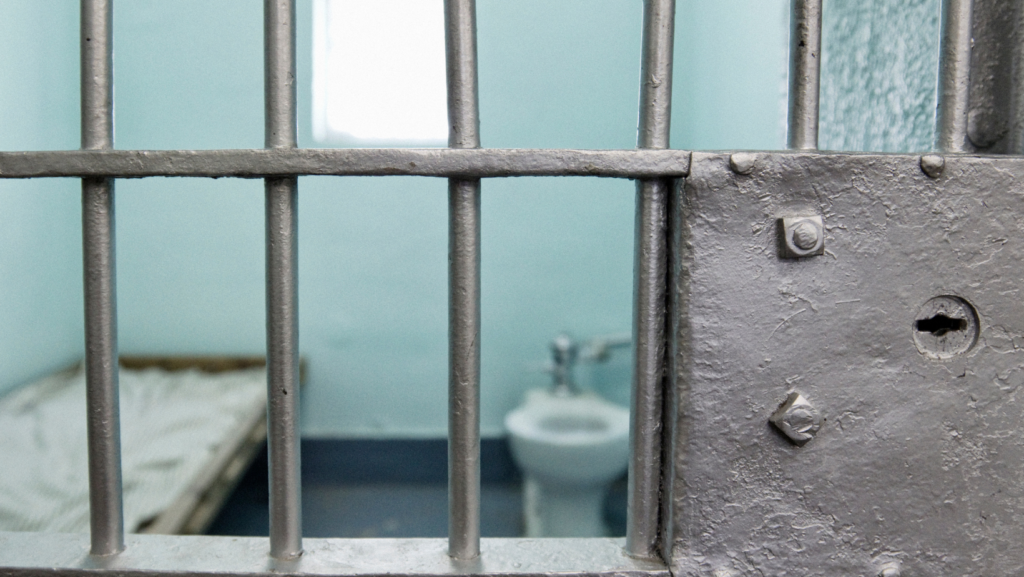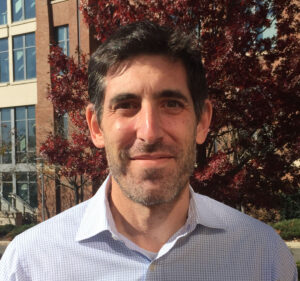David Rosen, MD, PhD, a researcher with the Institute for Global Health and Infectious Diseases (IGHID), assessed healthcare services at county jails in North Carolina, South Carolina, Georgia, and Alabama. The results indicate jail healthcare falls short of community standards.
The need for adequate healthcare has been a long-standing concern for the millions of people incarcerated each year. This is because jailed populations are disproportionately likely to have chronic health problems such as diabetes, high blood pressure, and infectious diseases. Substance use disorders and mental health problems are also common among incarcerated populations. A U.S. Supreme Court ruling in 1976 established that jails and prisons have an obligation to provide medical care for “serious” health conditions, but healthcare access behind bars is complex and not closely regulated. Jails are often operated and funded by their respective counties, with county sheriffs primarily responsible for their management.

David Rosen, MD, PhD, a researcher with the Institute for Global Health and Infectious Diseases (IGHID), with Jessica Carda-Auten, MPH (IGHID), Elena DiRosa MPH (IGHID), and Debbie Travers, PhD, MSN (Duke, School of Nursing), led a study that assessed healthcare services at county jails in North Carolina, South Carolina, Georgia, and Alabama. From October 2020 to May 2021, the team conducted 45-minute phone surveys to understand healthcare staffing at jails. People surveyed were offered $35 to participate.
“Considering the important role that jails play in providing healthcare and supporting public health, there has been surprisingly little research examining the ‘nuts and bolts’ of routine healthcare in jails,” explained Dr. Rosen, an associate professor of medicine in the division of infectious diseases.

The study team measured the amount and type of healthcare staffing available in jails by conducting jail surveys in the southeast, a region with comparatively high rates of mortality, un-insurance, and incarceration. While it did not measure health outcomes, the results demonstrate community healthcare standards are likely not being met in many jails.
“The American College of Physicians and other organizations have advocated for healthcare in jails to be timely and consistent with that in the community. But what we observed is that healthcare staffing levels available in jails were lower than those across a wide range of community settings – and even lower than those in prisons. I think most would agree that the staffing levels identified in our study likely create substantial barriers to achieving timely, community-consistent care. I also can’t think of another setting where lay personnel–in this case detention officers—have so much healthcare responsibility.”
Dr. Rosen’s study “Jail Healthcare Staffing in the U.S. Southeast: A Cross-Sectional Survey” was published in the Journal of General Internal Medicine.
Conducting the Survey
The study began by identifying the universe of county jails in the four states, using government lists and other public sources. The team contacted sheriffs, jail administrators, or jail healthcare administrators, at each jail to identify the appropriate person to survey, who was most knowledgeable about the jail’s healthcare resources, staffing, and practices. When a jail had no onsite healthcare staffing or when healthcare personnel could not be reached, declined to participate, or were barred from participating by their contracted company, jail administrators were surveyed.
The team measured weekly onsite healthcare coverage rates, reported as hours per 100 incarcerated person-weeks (IPWs), by personnel type and telemedicine. They also measured the healthcare duties of detention officers.
The Results
Altogether, the study surveyed personnel from 254 out of the 346 jails identified. Among the surveyed jails, 71% had onsite non-psychiatric providers, such as Physicians and Physician Assistants, 50% had Registered Nurses, 70% had Licensed Practicing Nurses, and 9% had psychiatric providers.
Across all jails, the median onsite hours per 100 IPW was 2.0 for providers, 1.1 for RNs, 35.5 for LPNs, and 0 for psychiatric providers. For jails that had routine onsite staffing, the median onsite hours per 100 IPW was 3.3 for providers, 25 for RNs, 52 for LPNs, and 1.6 for psychiatric providers.
The team learned that not only did nearly 30% of jails routinely lack onsite providers, and 50% lack RNs, but most jails that staffed these personnel held modest onsite hours considering that jails operate 24 hours a day, seven days a week.
Meanwhile, telemedicine was used for primary care in 13% of jails (providing 2.1 hours per 100 IPW); for mental healthcare in 55% (2.1 hours per 100 IPW); and 5% for other specialties (1 hour per 100 IPW). “In assessing telemedicine, we found that it was infrequently used for primary care, and while telemedicine did have the greatest impact on bolstering access to psychiatric providers, access to psychiatrists remained low.”
According to Dr. Rosen, in about half of the jails surveyed, there was neither a provider nor an RN onsite for more than two days per week, suggesting less-skilled personnel such as LPNs could go multiple days without onsite supervision.
“Although jails often have access to off-site providers and RNs—and can also use community EDs—the lack of onsite supervision really sets jails apart from other settings. Jails are also distinct because of their heavy reliance on officers in supporting care.”
In 81% of jails, officers conducted medical intake screenings, and in 58%, officers assessed the urgency of medical requests. Officers also supported a wide range of other healthcare responsibilities. Survey results showed an inverse relationship between the number of healthcare responsibilities by officers and weekly nursing hours.
“Our results clearly show that as nursing coverage goes down, officers are tasked with more and more healthcare duties. This is concerning because the basic healthcare training to become certified as an officer is typically very modest compared to that of dedicated healthcare personnel; yet, their actions can have a profound impact on the health of jailed people, particularly as gatekeepers to medical personnel. The lack of training has likely been exacerbated as jails have faced officer shortages and high turnover during the last several years.”
A related issue is that people in jail may be reluctant to disclose their medical issues to officers, even when those issues are urgent. Dr. Rosen says that while there are other community settings that rely on lay persons to support care, there is no other setting in which non-medical personnel—in this case officers—have so much responsibility for people coming right off the street.
“Our findings raise concerns that LPNs and officers may have insufficient supervision, and healthcare responsibilities that exceed their training. As a result, healthcare in many jails lags behind what is accessible in community settings. This situation not only represents missed opportunities for care, but we worry about patients having poor outcomes in this setting.”
“This is more than just a jail issue, because people are constantly cycling in and out of jail. Their health has a very real impact on community health. Considering the racial and economic disparities in incarceration, these healthcare deficits can further exacerbate health disparities.”
Although the study focused on the southeast, Dr. Rosen believes there is little reason to think findings would differ across other parts of the country. Given the complexities of jail healthcare and limited county resources, new models of jail healthcare funding, greater telehealth use, greater accountability of healthcare contractors and policies which safely reduce the size of jailed populations should be explored as possible mechanisms to adequately address the health needs of jailed persons.
